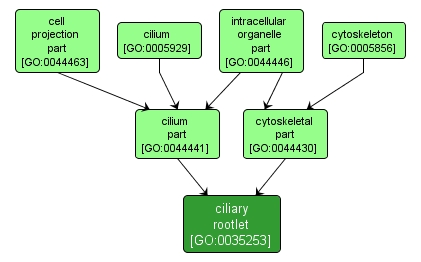| Desc: |
A cytoskeleton-like structure, originating from the basal body at the proximal end of a cilium, and extending proximally toward the cell nucleus. Rootlets are typically 80-100 nm in diameter and contain cross striae distributed at regular intervals of approximately 55-70 nm. |














